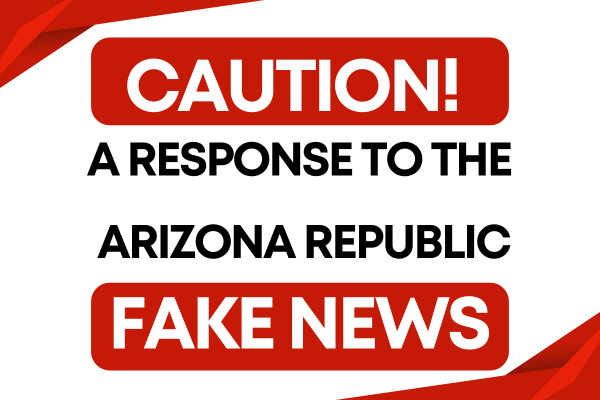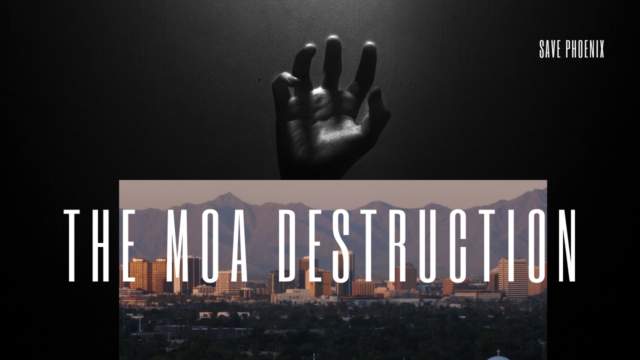The summary report from the DOJ on the Phoenix Police Department will likely be released within weeks and it’s time to discuss exactly what that is and what it is designed to do. Regardless of what consent decree you read, they are very similar and designed to intimidate the decision makers into agreeing with what it says.
The problem is that it is a summary report and based on every one we have read, they are massively flawed, written vaguely, and with just a handful of examples that are not placed in context.
The same will be done in Phoenix. Because the DOJ brings a preconceived notion into an investigation, the reports are predictable and while we are working on an entire report, we wanted to show you what the main and first highlight will be in Phoenix.
It’s always about race. Once again, this is designed to make the agency look horrendous while at the same time convincing the policy makers they better comply or else.
Read the intro to our mock up report and catch us at the end for some important advice.
SUMMARY OF FINDINGS
The Department of Justice has reasonable cause to believe that the city of Phoenix and the Phoenix Police Department engage in a pattern or practice of conduct that deprives people of their rights under the Constitution and federal law:
- PPD uses excessive force including deadly force in an unconstitutional manner.
- PPD unlawfully discriminates against Black people in its enforcement activities.
- PPD violates the rights of people engaged in protected speech critical of policing.
- PPD discriminates against people with behavioral health disabilities when responding to them in crisis.
- PPD has poor training, policy, and supervision, which enables this abuse.
For years, PPD has practiced an aggressive style of policing that it deploys selectively, especially against Black people, but also against vulnerable people throughout the city. PPD cites people for minor offenses, while serious crimes like homicide go unsolved. Some officers demonstrate disrespect for the people they are sworn to protect, and the agency has routine violated the rights of peaceful protestors. At times, these unconstitutional actions resulted in officers mocking the victims such as an incident in August 2017, where PPD officers circulated a commemorative coin that visually portrayed a protester being shot by less lethal munitions in the groin area.
There is widespread failure of leadership and accountability within the PPD, that has allowed this unlawful conduct to continue without repercussions. First-line supervisors regularly fail to monitor their officers and recognize misconduct when it occurs, and more senior leaders fail to demand better.
PPD Uses Excessive Force in Violation of the Fourth Amendment.
We evaluated PPD’s force practices with the understanding that officers often encounter challenging circumstances that threaten their safety or the safety of others. These encounters may necessitate the use of force, including deadly force, to protect officers and others from the threat of harm. We conducted our review with this understanding, keeping in mind that our conclusions cannot be based on 20/20 hindsight, but rather should be guided by the perspective of a reasonable officer on scene. We also note that PPD has already made some efforts to improve the way officers use force in the field. Nonetheless, we have reasonable cause to believe that PPD engages in a pattern or practice of excessive force. PPD’s unreasonable force is widespread and extends to both lethal and less-lethal force.
The Fourth Amendment protects people from the use of excessive force. An officer’s use of force must be objectively reasonable in light of the “totality of the circumstances.” Courts typically consider three factors when deciding whether an officer’s use of force was reasonable: (1) the severity of the crime; (2) whether the suspect poses an immediate threat; and (3) whether the suspect is actively resisting arrest or attempting to evade. Deadly force is permissible only when an officer has probable cause to believe that a suspect poses an immediate threat of serious physical harm to the officer or others.
We found that officers routinely use force disproportionate to the threat or resistance posed. Officers use force simply because people do not immediately follow their orders, even when those people are not physically resisting officers or posing a threat to anyone. At times, officers use force to inflict punishment or to retaliate against those challenging their authority, in violation of both the First and Fourth Amendments. PPD officers also have used unreasonable force against peaceful protesters, people with disabilities, and teenagers.
PPD Unlawfully Discriminates Against Black People in its Enforcement Activities. We have reasonable cause to believe that PPD engages in racial discrimination in violation of Title VI of the Civil Rights Act of 1964 and the Safe Streets Act. Black people in Phoenix disproportionately experience the conduct described in the previous sections of this report.
Despite only making up 7% of the population in Phoenix, Blacks are the subject of police use of force at a disproportional rate. Blacks are stopped at a higher rate than other groups in Phoenix and they are subject to a higher level of less lethal force compared to their representation in the city.
Our conclusion that PPD engages in unlawful discriminatory policing against Black people is based on the following:
- First, we identified significant racial disparities across a range of PPD’s documented enforcement activities, including stops, searches, and arrests. The large racial disparities we found are unlikely to result from race-neutral factors. In multiple areas, PPD treats Black people differently from white people who engage in similar behavior.
- PPD Engages in Racially Disparate Enforcement that Harms Black People. PPD treats Black people differently than white people even when they engage in the same conduct.
As an example of the disparity we found, PPD tracks data on when they point their gun at someone. In the 4-year period we analyzed this data and found that PPD points their gun at minorities 77% of the time with the largest disparity being Blacks. While they make up just 7% of the population, they made up 24% of the pointed weapon reports. Many of these incidents did not involve a crime being committed. Additionally, 66% of those shot by PPD for minorities. Once again, Blacks made up 20% of those shootings while they only make up 7% of the population.
PPD treats minorities differently than white people even when they engage in the same conduct. This is displayed in the arrest rates of Black and Hispanic suspects, who are arrested at twice the rate of white people.
****************************************************************************************
The Scam Is In The Detail
You may have asked yourself, where did we get this information. We simply copied a previous report and combined it with some data from the media. The DOJ report will be similar and it may give an example or a few but ask yourself where the real details are.
When the final report does come out, these are the questions you should immediately ask.
- Why are they comparing the census population to police activity and not comparing criminal activity to police activity?
- With 10 years of data, video, reports, etc., why does the report list just a few examples under each category and where are the complete details of those examples?
- Since the DOJ is accusing Phoenix police officers of violating the civil rights of individuals, why are they not filing criminal charges on the officers?
- Use of force is directly related to suspect violence. Why is there not a comparison to who is committing violence or assaulting officers?
- There have been approximately 17 million 911 calls combined with millions of citizen contacts in the time period that the DOJ investigated. Have they actually proven in their report that there is a “pattern and practice.” They will say it but what does the investigation actually say?
- What is the DOJ leaving out in their “examples” of misconduct? In nearly every vignette they will include in their report, key details will be intentionally left out, including the fact that in nearly every single instance, the Department took immediate and proper actions to address the misconduct or other issues presented. The DOJ will imply that the Department ignored or covered up the incident by simply stopping their “example” at the alleged conduct while ignoring the actions the agency did afterwards.
The DOJ is hoping that their release of the “summary” report combined with their national press conference will shame Phoenix officials from simply agreeing to a consent decree but there is a huge problem with that agreement.
- They will release a “summary” report which is not the full investigation. The accusations will be so serious, how could the Phoenix City Council agree to anything without seeing and evaluating the entire investigation? The only way that the DOJ will reveal that would be federal court and that tells you a lot about their case. If the investigation was legitimate, there would be no reason to hide behind a flawed summary report. No prosecutor would ever file charges without the full investigative details and politicians should never make a decision this damning without seeing it as well.
- If the Phoenix City Council simply thinks that everything said about PPD is accurate, then it is their job to correct it. Is the DOJ the right place to correct it?
Any observation of police consent decrees over the last 30 years gives you the answer you need to know. If Phoenix Politicians agree to letting the DOJ control law and order in our city, they will have no excuse.
They have been informed.
They have been told.
And they have been put on notice.





